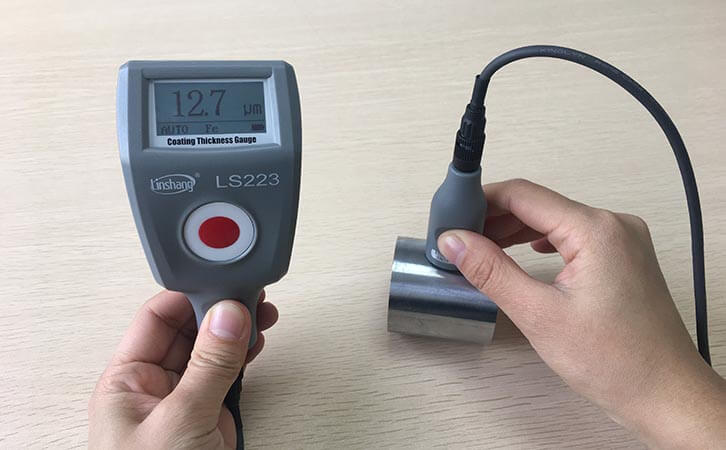Galvanized Paint Mil Gauge
The galvanized coating thickness is a very important process parameter to ensure product quality and improve product corrosion resistance. We usually use a galvanized paint mil gauge to measure the coating thickness. This article describes in detail the use of galvanized paint mil gauges in the galvanizing industry. The background knowledge of galvanizing and several different types of galvanized paint mil gauges are introduced in detail.
1.Background knowledge of galvanized layer
Steel can corrode when electrolytes (such as water) come in contact with the anode and cathode on the steel surface. The formation of corrosion holes results in flaky iron oxide, called rust. In order to avoid rust, measures must be taken to prevent the formation of corrosion ponds. Two common ways to prevent steel corrosion are:
Cathodic protection (through the use of anodes).
Form a barrier layer to prevent the electrolyte from contacting the steel.
Galvanizing is the process of plating the anode layer of zinc on the steel surface to provide protection. After galvanizing, we usually need to check the coating thickness, coating appearance, adhesion and uniformity. The thickness of the galvanized layer is directly related to the service life of the product, the ability of the protective layer to prevent corrosion and the quality of the product. The thicker the zinc coating, the longer the service life of the coated parts. Therefore, checking the coating thickness is the most important step in determining the quality of the galvanized coating.
2. Measure the galvanized layer thickness
We usually choose different test methods based on the size, shape and number of tested parts. Specified test methods are classified as destructive or non-destructive.
How to measure galvanized thickness?
Use magnetic paint mil gauge
Stripping and weighing
Weighing parts before and after galvanizing
Light microscope (ASTM B 487)
3. Galvanized paint mil gauge
We mainly introduce one of the most widely used methods for non-destructive measurement of galvanized coatings-using galvanized paint mil gauges. Linshang galvanized paint mil gauges are mainly divided into two types: integrated paint mil gauges and split paint mil gauges. Linshang LS220H integrated galvanized paint mil gauge is suitable for one-handed operation and can record data while measuring. This instrument is very compact and easy to carry. Linshang LS223 split galvanized paint mil gauge is suitable for measurement in small spaces and some higher or lower test positions. You can read the data while measuring, which is convenient for reading. This instrument can connect two probes with a maximum measurement thickness of 5mm. The following is a photo showing the thickness of the galvanized layer measured by the Linshang LS223 split galvanized paint mil gauge.
Dual use -iron and aluminum dual-purpose instrument.
Uses the principles of magnetic induction and eddy current.
Magnetic thickness measurement is suitable for non-magnetic coatings on ferromagnetic metal substrates, such as plastics, paints, enamels, etc.
Eddy current thickness measurement is suitable for the measurement of non-conductive coatings such as anodized films and paint on non-magnetic metal substrates.
If you have questions about more coating thickness measurements, please call Linshang Technology at +86135-1063-3052!
- High precision coating thickness gauge for used car
- Automotive paint protection films coating thickness gauge
- Plating Thickness Measuring Instrument for Detecting Anti-corrosion Coating
- Linshang LS220, LS191, LS160A– Necessary for Car Cover Inspection
- Coating Thickness Gauge for Second Hand Vehicle
- Zero Adjustment Step of Coating Thickness Gauge
